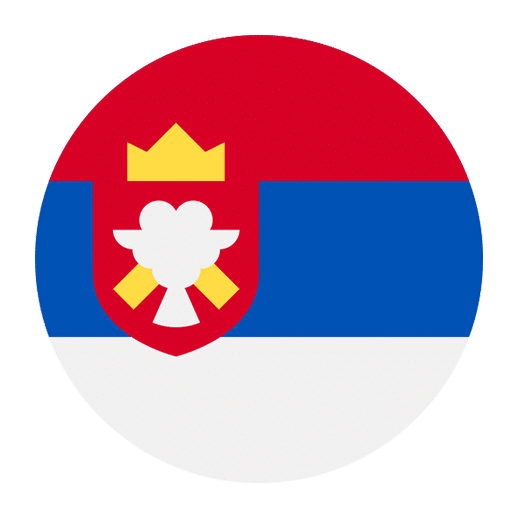Serbian, a South Slavic language, is spoken by millions across Serbia, Bosnia and Herzegovina, Montenegro, and parts of Croatia. Learning Serbian can be an enriching experience, but its pronunciation presents unique challenges for English speakers. This guide will navigate you through the common pitfalls and provide tips to master Serbian pronunciation.
The Serbian Alphabet
Before diving into pronunciation, it’s crucial to understand the Serbian alphabet. Serbian uses both Cyrillic and Latin scripts, and knowing both is essential for comprehensive language learning. The Cyrillic script has 30 letters, each representing a single sound, making it phonetic and straightforward once mastered. The Latin script mirrors the Cyrillic in sounds but uses different symbols. Here’s a quick look at both alphabets:
Cyrillic Alphabet: А Б В Г Д Ђ Е Ж З И Ј К Л Љ М Н Њ О П Р С Т Ћ У Ф Х Ц Ч Џ Ш
Latin Alphabet: A B C Č Ć D Dž Đ E F G H I J K L Lj M N Nj O P R S Š T U V Z Ž
Vowels
Serbian vowels are relatively straightforward, but they differ slightly from their English counterparts.
A – Pronounced like the ‘a’ in “father.” It’s always short and never elongated.
E – Similar to the ‘e’ in “bet.” It’s a pure vowel sound without the glide found in the English ‘a’ in “late.”
I – Pronounced like the ‘ee’ in “see.” It’s a sharp and short sound, unlike the diphthong in “ice.”
O – Similar to the ‘o’ in “or.” It’s a pure sound without the glide found in the English ‘o’ in “go.”
U – Like the ‘oo’ in “food.” It’s a rounded and short sound, unlike the diphthong in “you.”
Common Pitfalls with Vowels
1. **Length and Purity**: English speakers often elongate vowels or add a glide, turning pure vowels into diphthongs. Remember, Serbian vowels are short and pure.
2. **Confusing ‘E’ and ‘I’**: Ensure that ‘e’ remains like the ‘e’ in “bet” and ‘i’ stays like the ‘ee’ in “see.” Mixing them can lead to misunderstandings.
Consonants
Serbian consonants can be tricky due to sounds not present in English. Here’s a breakdown of some challenging ones:
Đ / Dž – Đ is pronounced like the ‘j’ in “jungle,” while Dž is like the ‘dg’ in “judge.”
Ć / Č – Ć is a soft ‘ch’ sound, like in “cheese,” but softer. Č is a harder ‘ch,’ like in “chocolate.”
Š – This is the ‘sh’ sound, like in “shoe.”
Ž – Pronounced like the ‘s’ in “measure.”
Lj / Nj – Lj is like the ‘lli’ in “million,” and Nj is like the ‘ny’ in “canyon.”
R – The Serbian ‘r’ is rolled or trilled, unlike the English ‘r.’ It’s similar to the Spanish ‘r’ in “perro.”
Common Pitfalls with Consonants
1. **Trilled ‘R’**: English speakers often struggle with trilling ‘r.’ Practice by imitating the sound of a car engine or a cat purring.
2. **Differentiating Soft and Hard Sounds**: Ć and Č, as well as Đ and Dž, can be confusing. Pay close attention to the subtleties in pronunciation.
3. **Palatalized Consonants**: Consonants like Lj and Nj involve a specific tongue placement that isn’t natural for English speakers. Practice slowly and exaggerate the movements to get used to them.
Stress and Intonation
Stress in Serbian words is dynamic and can significantly alter meanings. Unlike English, stress can fall on any syllable and isn’t fixed.
General Rules:
– Stress typically falls on the first syllable of a word in its base form.
– In compound words or words with prefixes, stress may shift.
Common Pitfalls with Stress
1. **Predicting Stress**: English speakers tend to stress syllables similarly to how they would in English. Pay attention to native speakers and mimic their stress patterns.
2. **Shifting Stress**: Recognize that adding prefixes or forming compound words can shift stress. Practice with different word forms to become more adaptable.
Pronunciation of Common Words
Let’s look at some commonly used Serbian words and their pronunciation:
Zdravo (Hello) – ZDRAH-voh
Hvala (Thank you) – HVAH-lah
Molim (Please) – MOH-leem
Da (Yes) – Dah
Ne (No) – Neh
Dobar dan (Good day) – DOH-bahr dahn
Common Pitfalls with Common Words
1. **Cluster Consonants**: Words like “zdravo” have clusters uncommon in English. Break them down and practice slowly.
2. **Purity of Vowels**: Ensure vowels remain pure and short. For example, “hvala” should not sound like “hvaalah.”
Tips for Improving Pronunciation
1. **Listen and Imitate**: Exposure to native speakers through movies, songs, and conversations is invaluable. Imitate their speech patterns, stress, and intonation.
2. **Record Yourself**: Recording and listening to yourself can help identify areas needing improvement. Compare your pronunciation with native speakers.
3. **Use Phonetic Resources**: Utilize phonetic transcriptions and guides to understand the exact sounds. Online resources, like Forvo, can be helpful.
4. **Practice with a Native Speaker**: Engaging in conversations with native speakers provides real-time feedback and exposes you to natural speech.
5. **Focus on Problem Areas**: Identify your weak points and dedicate extra practice to them. If rolled ‘r’ is challenging, spend more time on tongue exercises.
Conclusion
Mastering Serbian pronunciation requires understanding its unique sounds, stress patterns, and intonation. While the journey may be challenging, the reward is the ability to communicate effectively in a beautiful and rich language. Remember, practice and patience are your best allies. Listen, imitate, and immerse yourself in the language, and you’ll find yourself pronouncing Serbian words with confidence and ease.

